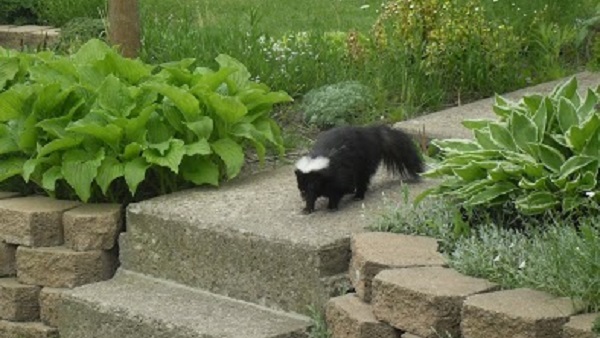The crisp, cool days of fall signal change. We, humans, relish in the break from the hot and humid days of a Midwest summer yet understand that the harsh and colder winter is just around the corner. We begin to mentally and physically prepare ourselves for what’s to come, and we start the work of prepping our property and homes as well.
What about our urban wildlife? What do they do at this time of year? It depends to some extent on the animal, but all of them, skunks included, begin the process of readying themselves and their shelters for colder weather, just like we do.
Skunk Winter Preparations
Skunks prepare for the winter by bulking up on food. The extra layers of fat provide the animal with a store of calories over the winter, and they also serve as insulation during the cold months of the year.
This mammal, known for its incredibly potent aroma, loves to dine on grubs. Not one to miss out on an opportunity, however, it has no problem diving into a meal of garbage or a bag of pet food left outside. Keeping your refuse bins secure and your pet food in a locking container is imperative in the fall months when skunks are on the hunt for extra calories.
Unfortunately, an increase in feeding activity can result in a greater chance that your family or your pets startle a foraging skunk, and we all know what happens then! If skunks become a nuisance on your property, call humane wildlife control Milwaukee. These animals are important to ecosystems and can be removed in a manner that is safe for them and allow you and your pets the freedom to roam without fear of being sprayed.
Skunk Winter Habits
Skunks are not hibernating animals, but they do slow down significantly. They enter a state called torpor, in which their metabolism slows and their body temperature lowers. Though these mammals fatten up in the fall, they do still require sustenance in the winter, which means your refuse bins can continue to provide easy access if not secured, especially when the ground becomes frozen, making digging for grubs a greater effort.
These social animals live in groups, and in the winter, their group sizes grow as they huddle together inside dens that are lined with grass, leaves and other debris to keep warm. While skunks can and do burrow, they also take advantage of ready-made homes near available food whenever possible. This means that they can take over an abandoned animal den or find a favorable spot on your property.
Skunk Home Dwellers
When skunks are looking for a place to take up residence for the winter, they merely want a shelter that is safe from the elements. As such, your garage or basement is a good candidate. These animals are prone as well to utilizing the spaces under a woodpile, deck or anywhere else that provides warmth. Have a close look around your property for places where skunks may try to build their winter dens.
We recommend that you have your property assessed prior to the onset of freezing temperatures. Skunk exclusion is best done before the snow is on the ground and before skunks enter torpor. Humane wildlife removal Milwaukee ensures the animals are safely removed at a time when they can still find a new, safe den for the winter months.
Skedaddle Humane Wildlife Control
Skedaddle technicians understand skunk behaviors and know their annual survival routines. We utilize our knowledge and skills to ensure humane wildlife removal that is in keeping with the animal’s own seasonal and life cycles, and we take the time to fill you in on what our process is. If you have any questions or would like a home assessment, contact us, or use our online form and someone will get back to you quickly.



